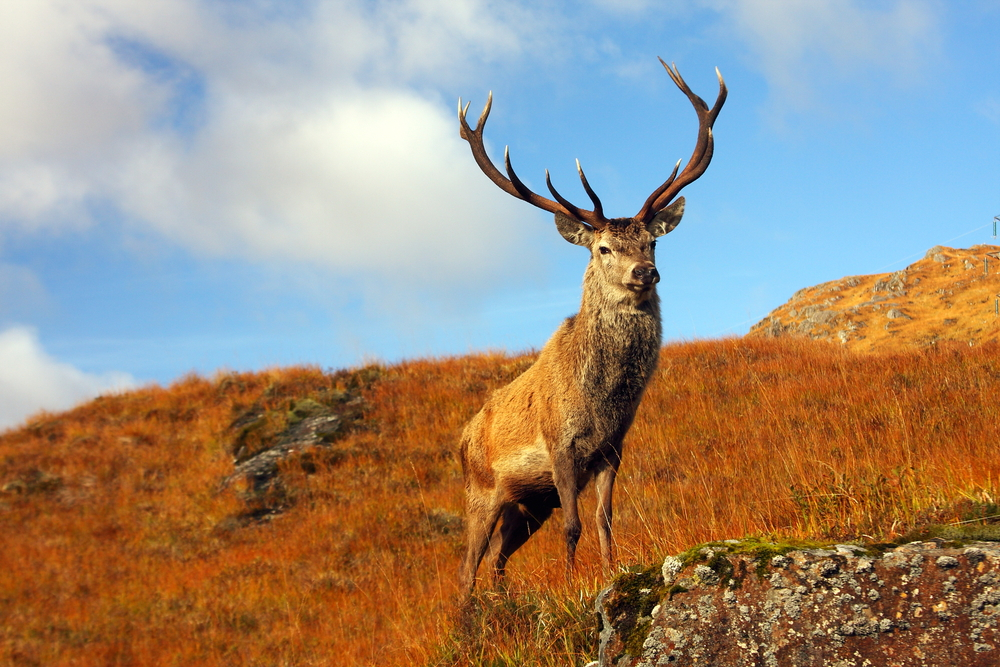
The sight of a stag tilting his crown of antlers back and splitting the morning mist with a mighty bellow has become an iconic image of Scotland, much depicted on everything from paintings to mousepads in tourist shops, but according to new research, the red deer in the Highland glens are distinct from those on the Scottish islands, which appear to have been trafficked across large distances by mysterious seafaring folk some 5000 years ago.
Red deer, the UK’s largest resident deer species, have lived in Britain for an estimated 10,000 years, after spreading across northern Europe after the end of last ice age. However, after examining the animals’ DNA and then comparing the results with other samples from across the region, researchers from Cardiff University now believe that the ruddy ruminants in remote places such as Orkney and the Outer Hebrides were transported directly to the islands from as far away as middle Europe, 5000 years after the mainland population had become established.

Although surprising, the research—recently published in the journal Proceedings of the Royal Society B—are not without precedent. A 2013 study discovered that the Orkney vole arrived on the island on the boats of Belgian farmers 5,100 years ago.
Still, the findings shocked scientists, who knew the islands were too distant for the deer to have arrived under their own steam, but had assumed that the animals had been shipped across from mainland Scotland or Ireland, not transported from far further flung destinations.
The new discoveries strongly suggest that deer were highly-prized assets for stone age communities, probably used for bartering. ‘The results imply that Neolithic humans were transporting deer considerable distances some 4,500-5,500 years ago,’ said Cardiff University’s Dr David Stanton, who led the research.
Researchers analysed DNA from deer bones unearthed at several archeological sites, and based on their findings, Dr Stanton theorises that the animals were brought from mainland Europe to Scottish islands on a regular basis. ‘The evidence suggests that we have misunderstood our relationship with this species,’ he said. ‘Red deer were obviously very important to neolithic people,’ he said. ‘They could make use of their meat, hides and antlers. Nothing would have been wasted.’
‘There’s not a huge amount known about the seafaring capabilities of humans in northern Europe around that time,’ Dr David Stanton told the BBC. His team will continue to conduct DNA studies of the island deer in an attempt to further pinpoint exactly where in Europe they originated. ‘There’s a lot we can still learn from them,’ he explained. ‘The stories of animals are linked to how ancient civilisations lived day-to-day… This potentially gives us a bit of a clue as to what they might have been capable of.’
Ultimately, deer didn’t survive on Orkney, but the population on the Outer Hebrides is the least managed in Scotland, with the animals basically roaming free.
